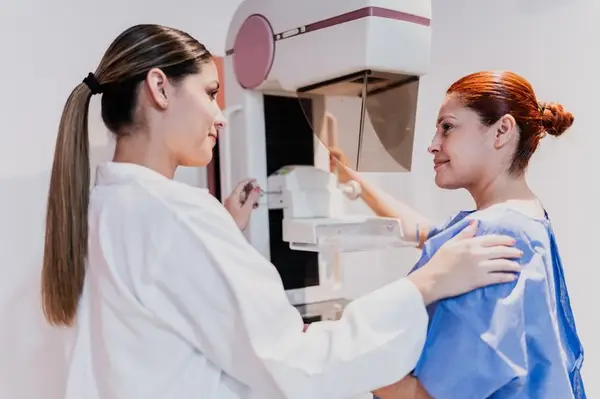Q:
Based on my mammogram results, I may need a biopsy. What is a biopsy, and how is it done? Should I be worried?
A:
The only way your doctor can determine whether a suspicious lump is cancerous or not is to perform a breast biopsy. That involves removing a sample of breast tissue to examine it under a microscope for signs of cancer. Rest assured, having a biopsy does not mean you have breast cancer. In fact, most biopsy results (four out of five) are not cancer, according to the American Cancer Society. Still, it's the only way to be sure.
A breast biopsy is either done using a needle or with surgery. The type of biopsy will depend on a number of factors, including how large the lump is, where it's located, your preference, as well as other medical problems. Be sure to tell your doctor about any allergies you have or if you are taking blood-thinning medications (anticoagulants) or aspirin.
Many biopsies can be done in your doctor's office or in the radiology suite under local anesthesia. The sample of breast tissue is then sent to the laboratory where it is examined by a pathologist (a doctor who has special training to examine cells under a microscope and identify diseases).
There are several types of breast biopsies, including:
- Fine needle aspiration biopsy (FNAB): A very thin needle is attached to a syringe to drain (aspirate) cells from the suspicious area. This is a fast and easy way for your doctor to collect a small sample of tissue from a tumor the doctor can feel or see with ultrasound. There are no stitches or scarring. However, because it's such a small sample, the rate of false negatives or misdiagnosis can be high, and additional studies (such as checking for estrogen or progesterone receptors) may be difficult to perform. If there is something visible only on your mammogram or MRI, your doctor will probably use a different method to be able to collect more tissue.
- Core needle biopsy: This procedure uses a slightly larger, hollow needle to remove several tissue samples often with ultrasound guidance. This type of biopsy is usually done in a doctor's office or radiology suite with local anesthesia to numb the breast. Because more tissue is collected, it can result in a more accurate diagnosis. Stitches are not needed, and while there may be bruising, there is no associated scarring. You may be advised to apply an ice pack and take a nonaspirin pain reliever with acetaminophen (Tylenol) to reduce any swelling or discomfort.
- Vacuum-assisted core biopsy (VACB): A single, small incision (about one-quarter inch) is made, and a probe is inserted, which sucks a larger piece of tissue out through the opening. The area is numbed beforehand, no stitches are needed and there is minimal scarring. This machine is usually used with ultrasound, mammogram or MRI guidance.
- Surgical biopsy: This procedure removes part (incisional biopsy) or all of the lump (excisional biopsy or lumpectomy). It is usually done in a hospital, with sedation and a local anesthetic. You will have stitches and some scarring where the incision was made. You should avoiding strenuous activities for a day or so and follow post-operative care instructions.
With any of the above, your surgeon or radiologist may use imaging studies, such as mammogram, MRI or ultrasound, to help guide the positioning of the needle or pinpoint the exact location of the lump during surgery.
It usually takes several days before the results come back. If the lump is benign (not cancer), no additional steps are needed, but it's important to stay on top of routine mammograms and monthly breast self-exams. If the biopsy is positive (shows signs of cancer), the results will help your health care provider determine recommendations for treatment.
Don't rush into any decisions. You may want to seek a second opinion before deciding which treatment is right for you. Remember, your input is important, so ask questions if you're unsure about anything, and get the support you need.






